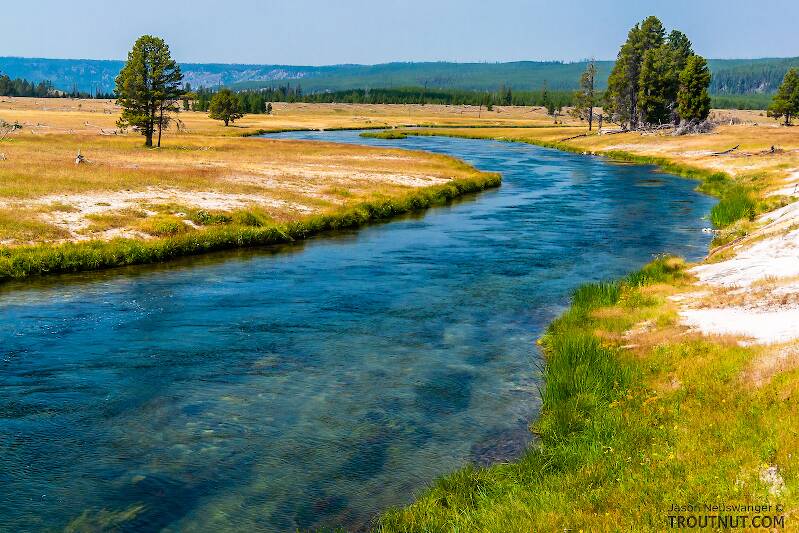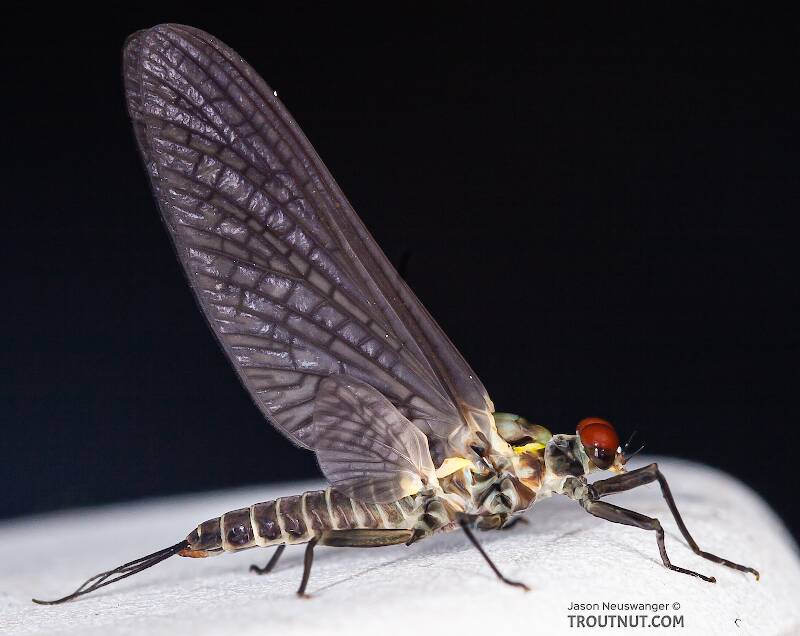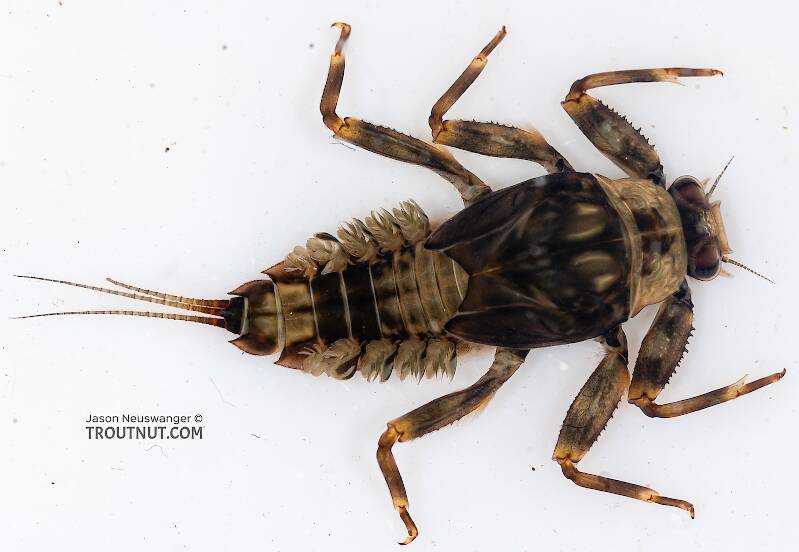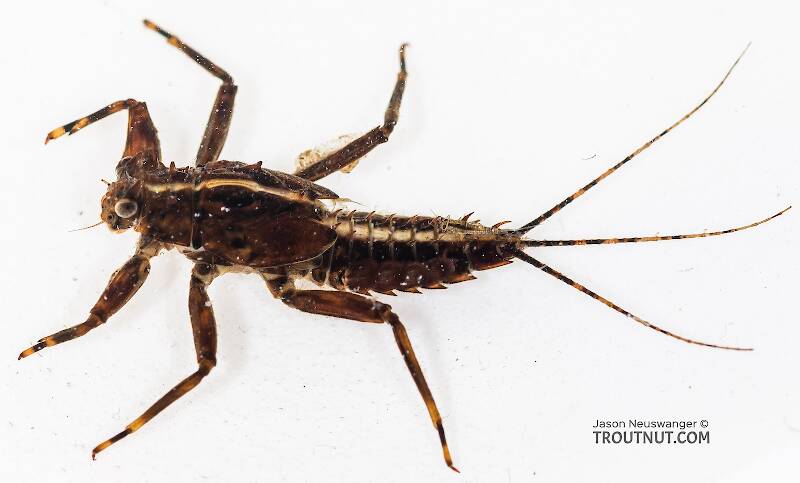
Blue-winged Olives
Baetis
Tiny Baetis mayflies are perhaps the most commonly encountered and imitated by anglers on all American trout streams due to their great abundance, widespread distribution, and trout-friendly emergence habits.
Featured on the forum

This specimen keys to the Epeorus albertae group of species. Of the five species in that group, the two known in Washington state are Epeorus albertae and Epeorus dulciana. Of the two, albertae has been collected in vastly more locations in Washington than dulciana, suggesting it is far more common. On that basis alone I'm tentatively putting this nymph in albertae, with the large caveat that there's no real information to rule out dulciana.

Troutnut is a project started in 2003 by salmonid ecologist Jason "Troutnut" Neuswanger to help anglers and
fly tyers unabashedly embrace the entomological side of the sport. Learn more about Troutnut or
support the project for an enhanced experience here.
Great Lead-Wing Olive Drakes
Like most common names,"Great Lead-Wing Olive Drake" can refer to more than one taxon. They're previewed below, along with 4 specimens. For more detail click through to the scientific names.
Mayfly Species Drunella doddsii
These are sometimes called Great Lead-Wing Olive Drakes.
This species together with the Drunella grandis sub-species make up the Western Green Drake hatch. Besides being smaller, the adults are difficult to tell apart from it's larger siblings; but D. doddsi nymphs have a few peculiar traits that set them apart. D. doddsi looks much thicker in the thorax, has a flat frontal head margin and a unique oval disk-like ring of hairs on its ventral surface. However, There are very few differences between the habits of these two species, and they are almost always discussed together in fly fishing books, so for many of the characteristics of doddsii, refer to the Drunella grandis page.
See 10 more specimens...
Mayfly Species Drunella grandis
These are sometimes called Great Lead-Wing Olive Drakes.
This species (or rather group of subspecies), together with Drunella doddsii, make up the famous Western Green Drake hatches. They are widespread throughout the vast Western region and can be abundant enough in many locations to provide world class angling.
It hasn't been all that many years since Western traditions and entomological "facts on the ground" began to influence the angler's lexicon heavily dominated by Eastern writers. Their initial reporting after visiting the region first popularized the phrase "Rocky Mountains answer to the popular Green Drakes of the East". This led to a false impression that lingers to this day. The reality is these giants of their family have abundant populations all over the West with no counterpart in the East, and the West does have abundant hatches of comparable Ephemeridae. The Western tradition of naming outsized Mayflies "Drakes" is the reason for what many consider a misnomer by giving it the same common name as the legendary Ephemerid of the East and surely contributed to confusion for anglers unconcerned with such subtleties.
It hasn't been all that many years since Western traditions and entomological "facts on the ground" began to influence the angler's lexicon heavily dominated by Eastern writers. Their initial reporting after visiting the region first popularized the phrase "Rocky Mountains answer to the popular Green Drakes of the East". This led to a false impression that lingers to this day. The reality is these giants of their family have abundant populations all over the West with no counterpart in the East, and the West does have abundant hatches of comparable Ephemeridae. The Western tradition of naming outsized Mayflies "Drakes" is the reason for what many consider a misnomer by giving it the same common name as the legendary Ephemerid of the East and surely contributed to confusion for anglers unconcerned with such subtleties.
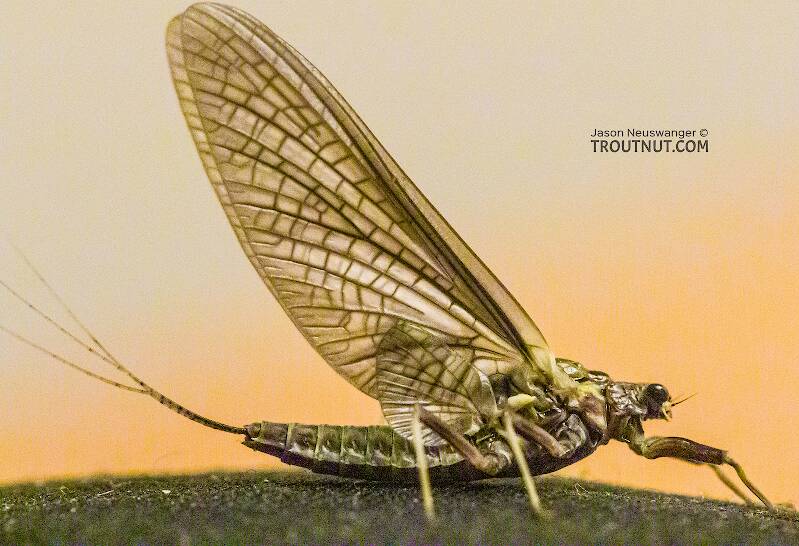
I collected this specimen while away from all my good photography equipment except the camera and one of my macro lenses, so I made do. The lighting is from lamps in a hotel room, so it was hard to edit for really true colors, but I tried to get as close as possible. The body was 13 mm long, wing 19 mm long.
See 10 more specimens...

